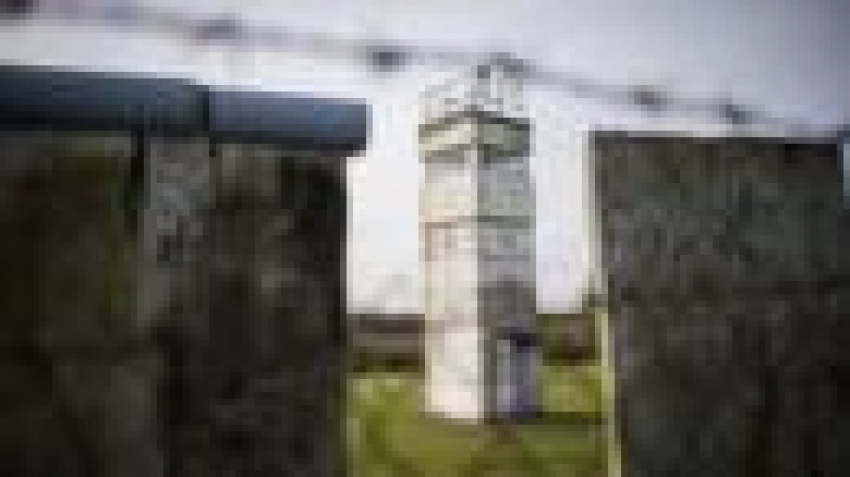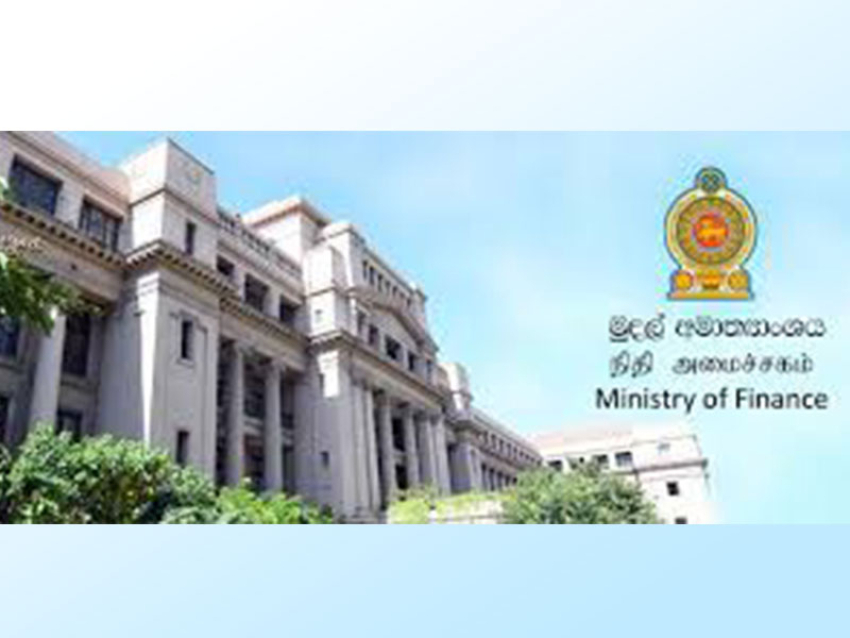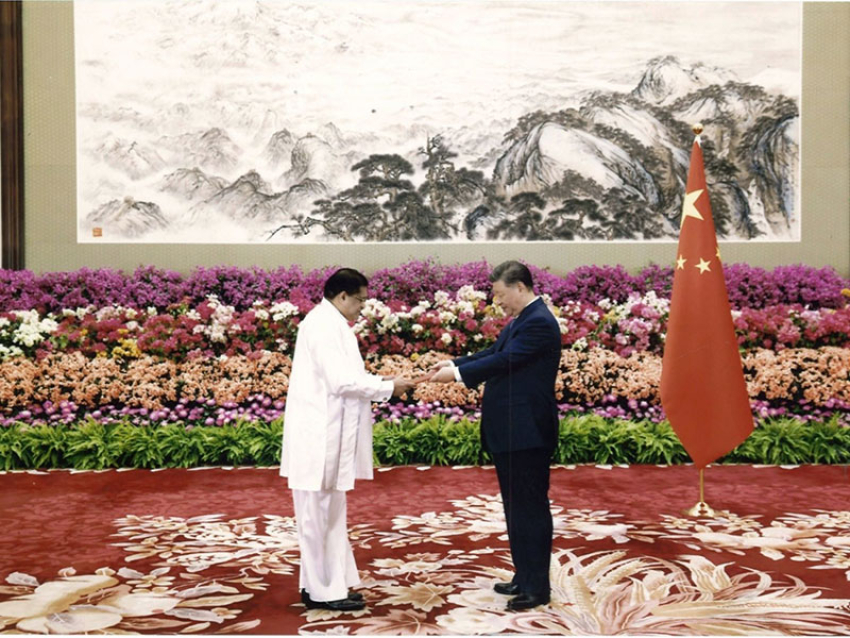The wildlife haven in a Cold War ‘death strip’
For decades they represented a no-go zone for people, but the walls and fences that divided Europe during the Cold War have left a surprising legacy.
By Sophie Hardach
22 August 2019
Rare birds sing in the shadow of old East German watchtowers. Wild reindeer roam the borderland between Finland and Russia. Lynxes slip past Communist bunkers in the mountains of Albania and North Macedonia. All over Europe, endangered species are finding an unlikely home on land where the former Iron Curtain divided the region during the Cold War.
For decades, the border that cut through Europe was a brutal symbol of the hostility between East and West, between the socialist and capitalist power blocs. Until the fall of the Berlin Wall 28 years ago, it divided Germany into the Federal Republic of Germany in the West, and the German Democratic Republic (GDR) in the East. Many lost their lives trying to cross over to the West, killed by snipers or landmines, in the no-go zone between the two nations. This heavily guarded corridor became known as the "death strip".
But in this region where no humans could tread, plants and animals thrived.
You might also like:
• The quest to explore Colombia's untouched jungle
• The Cold War bunkers that cover a country
• The terrible fate of our world if the oceans disappeared
Today, much of the strip of land along the former Iron Curtain has been turned into a “European Green Belt”. This 12,500km-long (7,767 miles) green corridor links national parks and wildlife sanctuaries from the Arctic Ocean to the Adriatic Sea, even branching off to the Black Sea. As climate change affects migration patterns, it has also become a vital escape route for species fleeing northwards to cooler areas. And it all began with some intrepid bird watchers.
Whinchats and watchtowers
“When I was 14, I started to record the bird species in the area,” says Kai Frobel, an ecologist who grew up on the West German side of the border in the 1970s. “I noticed very quickly that the majority of the rare species, like the whinchat, nightjar, corn bunting, were all breeding in the "death strip" of the GDR, of all places.”
Frobel was the first to publicly document this surprising wildlife haven, leading to a lifelong career as a conservationist. Today he works for a German environmental organisation (Bund) that started buying and protecting land along the western side of the border in the 1980s.
After the fall of the Berlin Wall in 1989, Frobel suggested turning the inner-German border into a 1,400km-long (870 miles) “green belt”. Germany reunified in 1990, making this possible. At the heart of Frobel’s plan was the so-called no-man’s-land. This strip of land had officially belonged to the GDR. But because it was on the western side of the border fence, it had barely been touched during the 40 years the East and West were divided.
All along the former Iron Curtain, pockets of wilderness were left untouched during the East-West stand-off
“The border patrols only went in there every few years and got rid of the shrubs, cleared the area a bit, and other than that, it wasn’t used at all,” says Melanie Kreutz, a project leader at Bund. “So no farming, no pesticides, no fertiliser. And this area, this no-man’s-land, is really the ecological backbone of the (German) green belt today.”
More than 80% of the former inner-German border now forms part of that protected green belt. Its historical legacy has been preserved along with the plants and animals. Visitors can spot wild orchids, otters and storks, but also explore the history of the Cold War through museums, exhibitions, and guided hiking and cycling tours.
All along the former Iron Curtain, similar pockets of wilderness were left untouched during the East-West stand-off. In the north, the forests of Norway, Finland and Russia sheltered elks and bears, and at the southern end, in the mountains and lakes of the Balkans, lynxes and pelicans thrived.
After the end of the Cold War, the countries along the border gradually joined forces to preserve their shared, accidental wildlife corridor.
The European Green Belt now runs through 24 countries covering a huge range of habitats including coastlines, lakes, forests and mountains. While there are still gaps, the green belt has turned into a lifeline for many endangered species.
Stepping stones for reindeer
“These corridors and stepping stones, they allow species to maintain their strongholds and to exchange genes, and to migrate,” says Aimo Saano, nature conservation manager at Metsähallitus, a Finnish government agency that manages the core areas of the Finnish part of the European Green Belt. “They create the complex ecosystems that should be there."
“As we know from densely inhabited Europe, this is the obvious danger: that ecosystems have been minimised and cut into small pieces, separated from each other.”
Linking up across borders can help fight this trend, and support species like the highly endangered wild forest reindeer. In the 1990s, one of the few remaining populations of wild forest reindeer lived in Karelia, a Russian region bordering Finland.
Unlike the inner-German border, the one between Russia and Finland has of course not disappeared. But Russian and Finnish conservationists have moved some of the Russian wild forest reindeer to a Finnish national park, establishing a smaller, second population west of the green belt. The reindeer can move back and forth across the border, and the resulting genetic exchange is vital to the species’ future health, Saano says.
Some species, such as birds, butterflies and other insects, are even migrating northwards along the European Green Belt to escape the effects of global warming. “At least here they will have a corridor to move [along],” says Saano.
Peace and pelicans
At the southern end of the European Green Belt, in the Balkans, the end of the Cold War was followed by a series of bloody wars. As the former Yugoslavia fell apart, few people saw wildlife protection as a priority. With peace, however, came a growing awareness of the area’s natural treasures, and a willingness to reach across borders to protect them.
There are still large areas of unspoilt nature – Sandra Wigger
“Our main focus is obviously the protection of the environment, but in the Balkans, it goes beyond that,” says Sandra Wigger, project manager at EuroNatur, an environmental foundation that coordinates local organisations along the Balkan section of the green belt. “It’s also about cross-border exchange, regional development, it’s about letting people see that they can take action together. Because they went through those years of war, which weren’t even that long ago.”
Both the natural conditions in this mountainous, sparsely populated area, and its Cold War history, have resulted in undisturbed wildlife habitats. Albania, for example, was particularly isolated under communist rule. Its borders are still dotted with bunkers. In Bulgaria, a no-go zone up to 25km (15.5 miles) wide in places, lined the border.
“There are still large areas of unspoilt nature, large forest areas that have only been used by the few people who live in these mountainous regions,” says Wigger. “The cities are usually very far away. That means we really have a huge biodiversity here that has been preserved.”
Dalmatian pelicans are among the species that have thrived in this pristine wilderness. The world’s largest colony breeds in the reedbeds by the Prespa lakes between Greece, Albania and North Macedonia.
Another border-crossing species, the endangered Balkan lynx, roams between different hunting grounds in and along the green belt, such as the Mavrovo National Park in North Macedonia, but also the mountains of Albania, Kosovo and Montenegro.
For the conservationists working along the European Green Belt, connecting with other countries also creates opportunities to exchange information and learn from each other.
“This European approach gives it such a huge dimension, where you really see, OK, there are people, organisations, governmental agencies on the whole continent that work together across borders,” says Wigger. “There’s this support, this feeling of being part of a community where you realise that you’re not alone.”
“A living monument”
Not everyone is in favour of the green belt, however. In Germany, where conservationists would like to close the remaining gaps, farmers’ associations have protested against its expansion. They fear the loss of farmland. Rising land prices, demand for biofuel crops, and road construction are also putting pressure on the green belt.
For Frobel, who spent his childhood next to a border that seemed impossible to breach at the time, protecting the green belt is about memory as well as nature.
“It’s a living ecological monument for a generation that didn’t experience the border,” he says. “Our basic expectation was that this monstrous inner-German border was built for eternity. Hardly anyone thought that, one day, it wouldn’t be there anymore.”
As his colleague, Kreutz, says: “For people, it was a death zone. But nature could really flourish freely there.”
Accessibility links
Skip to contentAccessibility Help
Sign in
News
Sport
Reel
Worklife
Travel
Future
More
Search the BBC
Search
Search the BBC
Future
What is BBC Future?
Latest
Best of..
NEW SERIES
Follow the Food
TOMORROW'S TRENDS
Future Now
Albanian bunker (Credit: Stephen Dowling)
Design
The Cold War bunkers that cover a country
Fearing invasion during the Cold War, Albania’s leader Enver Hoxha forced his country to build tens of thousands of bunkers. Long after the regime’s collapse, many still remain.
By Stephen Dowling in Albania
2 November 2018
It is a spring morning and the sun is already high and hot. I am scrambling across the ruins of Orikum, a Roman-era settlement that lies at the southern end of the sweeping Bay of Vlore, on Albania’s Adriatic coast. It is a remarkably well-preserved memory of the Roman occupation, complete with a theatre that still retains many of its stone steps.
But it is not why I am here.
There is another ruin at the foot of Orikum’s crumbling structures, though this one is less than half a century old, and far less celebrated. It was once the barracks for the nearby Pasha Liman naval base, which can be seen on the other side of the causeway road.
My guide, Elton Caushi, jokes that we are ignoring a 2,000-year-old ruin in favour of a 40-year-old one.
Between the ruins of the naval barracks and the road are a handful of bunkers. They are squat and grey, just tall and wide enough to fit a pair of people in each. The walls are crowned with a rounded cupola. They have been here since the 1970s, when Albania was one of the most isolated countries on Earth.
You might also like:
The nuclear bunker in ‘Europe’s North Korea’
How the Cold War Vulcan bomber flew again
The monster atomic bomb too big to use
The bunkers were the brainchild of Enver Hoxha, a former partisan who ruled post-war Albania for 40 years under a regime both brutal and surreal. Convinced that everyone from neighbouring Yugoslavia to Greece, Nato and even his former allies in the Soviet Union wanted to invade his country, Hoxha embarked on a bunker-building programme of titanic proportions.
The bunkers gazing out across the Bay of Vlore are the tip of a concrete-and-steel iceberg. From the northern border with Montenegro to the beaches facing the Greek island of Corfu, Albania was covered with bunkers in a frenzy of paranoid construction. They were built not just in their hundreds, or even several thousand – a conservative estimate puts the number of completed bunkers at more than 170,000.
Today, they continue to litter the countryside, brooding over mountain valleys, silently guarding crossroads and highways, lined like unearthly statues on deserted beaches. Their legacy goes beyond the physical; each is thought to have cost the equivalent of a two-bedroom apartment, and their construction undoubtedly helped turn Albania into one of the poorest countries in Europe, a legacy which remains to this day.
***
Hoxha had a name for the state of preparedness all Albanians should be in – gjithmone gati, or “always ready”. This state of mind came in part from his experiences in World War Two.
Albania’s small, poorly equipped military had been crushed when Fascist Italy invaded in 1939; fighting officially ceased after just five days. But the resistance did not completely end; it just melted away.
Albania is a mountainous country, perfect for guerrilla warfare, and its people earned a reputation for fiercely resisting invaders over the centuries. As the war progressed an Albanian partisan movement, helped by comrades in occupied Yugoslavia and their British and Americans allies, began attacking the Italian and German occupiers. Foremost among the resistance movement were communist partisans, led by Hoxha.
As the tide swung the Allies’ way, the Albanian resistance grew, gathering strength in mountain hideouts that proved impossible to dislodge. By the time they liberated the capital Tirana in November 1944, this rag-tag army of communists and nationalists was some 70,000 strong.
After World War Two ended, Hoxha consolidated power, ruthlessly exterminating rival factions and even some of his fellow resistance leaders. It became a Soviet-aligned communist state. The small country then stumbled from one diplomatic crisis to another. In 1947 Hoxha broke off relations with neighbouring Yugoslavia, ostensibly because the less hard-line Yugoslavs were straying from the true path of socialism.
Albania would become a land covered in bunkers
Albania then lurched into another problem in 1961 after Hoxha declaimed Stalin’s reform-minded successor Nikita Khrushchev. The Soviets and the rest of the Warsaw Pact froze Albania out, forcing the isolated state to align itself instead with Mao Zedong’s China.
This honeymoon, too, was short-lived. Incensed by Mao’s welcoming of US president Richard Nixon to China in 1972, Hoxha rapidly cooled relations with the Chinese too. By 1978, the Chinese had withdrawn all their advisors, leaving Albania without allies – and the most isolated country in the world.
It was against this backdrop that the bunkerisation began. Hoxha’s hard-line socialism had made it vulnerable, he thought, to Nato attacks from Italy or neighbouring Greece. But he had also made enemies of former friends. An invasion could come from the Yugoslavs themselves, or their country could be used as a corridor for a Soviet invasion via Bulgaria.
Albania’s small armed forces would have been no match in a conventional battle against these much larger possible foes. Hoxha instead called on the mobilisation of the general populace – most of whom had to do basic military training each year – to form a resistance in their tens of thousands.
In the days of the partisans, this would have been conducted from mountain hideouts, where small units would carry out attacks on the Italian or German outposts on lower ground. But Hoxha wanted to make sure that any potential invader would be put off from mounting an assault in the first place by creating a vast network of bunkers. From here, the people of Albania would contest every beach, village and crossroads.
This national resistance would call for a monumental construction project. Albania would become a land covered in bunkers.
Even bigger bunkers were constructed to protect civilians in case of attack
The most numerous were the QZ (Qender Zjarri or “firing position”). Designed to hold only one or two people, they were built from reinforced concrete.
The designer of the QZ was Josif Zagali, an engineer who had been a partisan during World War Two. Zagali mounted a rounded cupola on the top of the bunker so that bullets and shell fragments would rebound off it, giving the QZ its distinctive shape. The QZs would be built in small groups that could defend each other. The parts were designed to be prefabricated in factories and then assembled on site.
Larger command/artillery bunkers, known as PZs (Pike Zjarri or “firing point”) were more than 8m (26ft) across. In wartime, these would act as command posts for rows of smaller QZs.
Even bigger bunkers were constructed to protect civilians in case of attack. Every town or city district would have underground concrete bunkers big enough to house hundreds of people. In 2016, on a previous trip to Albania, I visited one of the old shelters in Gjirokaster, a city of 25,000 some three hours’ drive south of Tirana. It was big enough to easily hold hundreds of people.
One of those in charge of the construction of Hoxha’s concrete defences was Pellumb Duraj, a commander in an engineering detachment based in Burell in the north of Albania.
He graduated as a civil engineer in 1973 and was one of the first engineers drafted straight into the army. “I was appointed there – I had no choice,” he tells me over coffee outside a Tirana cafe.
“There was a need for more added protection because Albania left the Warsaw Pact, and [we] were alone in our political outlook and we were scared of atomic bombs and the American threat, so that situation pushed the government to ask for the building of bunkers. That was starting in 1968 when we left the Warsaw Pact.
“The most intensive process was starting from 1975, so in these seven years we had to do the studies of the projects to pave the way to building the bunkers. Until then the army didn’t have civil engineers, they hired them from time to time.”
It was Duraj’s job to make sure the bunker’s parts were not only produced and transported to the right place, but also that there were enough people onsite to put them together. And that was no small task; the army division Duraj was assigned to had 13,000 bunkers of various sizes to build.
At the beginning we had no experience, so it was the start of a new challenge, a very difficult one – Pellumb Duraj
Constructing the bunkers was such a monumental task that almost every major factory in Albania was put to work. Cement factories churned out prefabricated concrete sections that an army of labourers would assemble in the field. With Chinese help, a huge new steelworks was built in 1974 to produce metal, much of it to reinforce Hoxha’s army of bunkers.
Duraj had to negotiate with the collectives who were in charge of the rural settlements, which were organised much like the collective farms in the USSR. “At the beginning we had no experience, so it was the start of a new challenge, a very difficult one. In a way we could say the whole nation was involved in this process. The military managed it, but the people did the work. Public construction companies would produce them, public transportation companies would transport them to the field and then we had to hire local people according to their skills. Then, the unskilled labour was done by soldiers.”




















